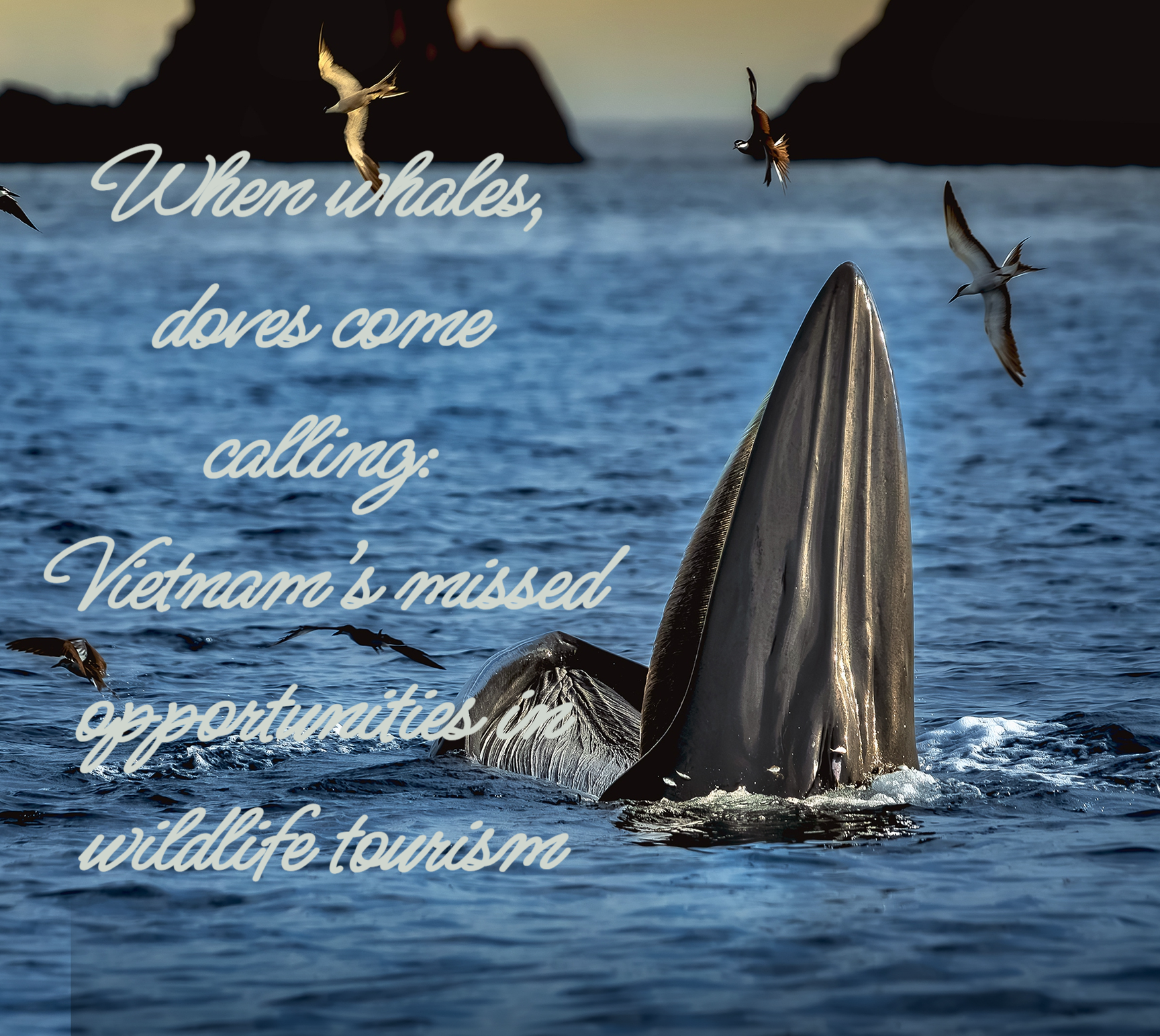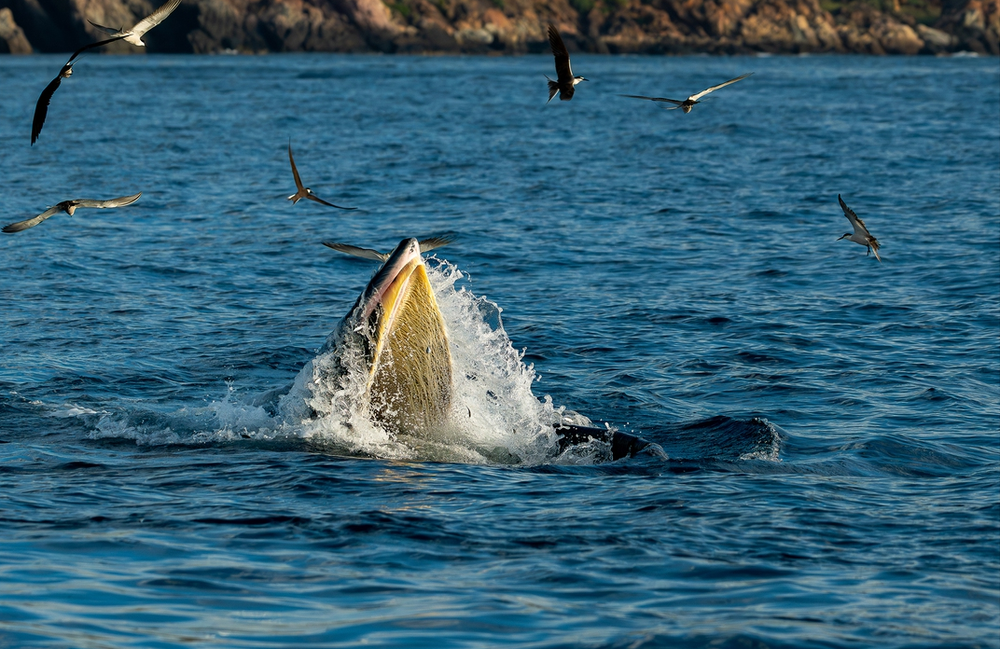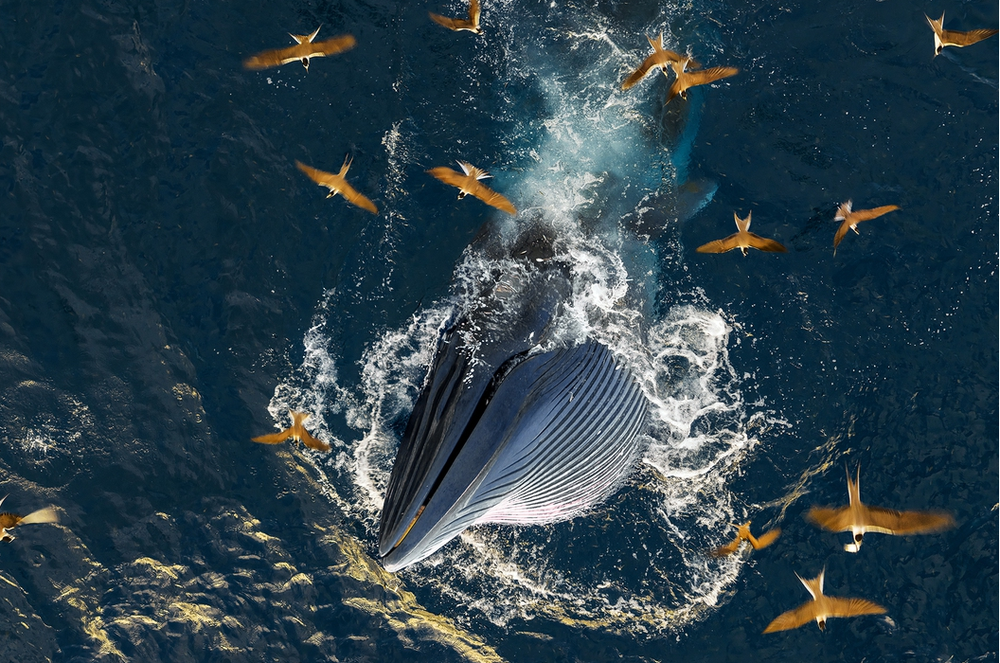Please enter Email
Email Invalid Format
Please enter your Full Name.

Since 2022, Bryde's whales have been appearing near the coast of Quy Nhon in Vietnam's Gia Lai Province. This summer, they came closer than ever—close enough to see clearly from shore using binoculars.
The new Gia Lai Province was formed through the merger of the former Gia Lai and Binh Dinh Provinces, effective July 1.
Hundreds of photographers have traveled to Quy Nhon hoping to capture the rare sightings. The process is simple and affordable: visitors can rent a boat for about VND1.2 million (US$45.70), which includes two trips—one in the early morning and one in the late afternoon.
Each trip accommodates four people, bringing the cost down to roughly VND300,000 ($11.54) per person.
The whale feeding area is only 30 minutes from shore. The low cost and ease of access have created significant interest. According to reports, the number of drones flying overhead has become so high that some have collided mid-air.
Shouts of "Only three meters from the whale!" and "It surfaced just one meter from my boat!" have become common across the bay.
In contrast, countries like Australia have built structured whale-watching tourism models.
In Victor Harbour, South Australia, the annual migration of humpback whales draws thousands of visitors and brings revenue to local vendors and businesses.
It’s easy to spot the presence of whales, as hundreds of terns typically circle overhead. These seabirds wait for the whales to open their mouths and swallow schools of small fish, then swoop in to snatch the leftovers. Photo: Tuoi Tre Contributor
Despite the whales returning to Quy Nhon for four consecutive years, the phenomenon has yet to be developed into a formal tourism product. It remains popular primarily within the photography community.
One of the challenges facing Vietnam's tourism sector, particularly in provinces like Gia Lai, is the slow development of new tourism offerings. Even when natural opportunities arise, response and coordination have been limited.
Lack of planning also raises environmental concerns. With hundreds of boats operating independently, there is little oversight on how human activity may be affecting the whales.
As of July 15, local authorities reported the whales had not been seen for two days.
Other countries have guidelines in place. The U.S. National Oceanic and Atmospheric Administration requires boats to stay at least 100 meters from whales and reduce speed to 18 km/h when in proximity.
Viewing periods are limited to 30 minutes. These rules apply to Bryde's whales, as well as other species found in Vietnam, such as humpbacks and sperm whales.
Drones must stay at least 300 meters above whales, and boats are not allowed within 200 meters of orcas.
Since 2022, Bryde’s whales have continuously appeared along various coastal areas of Gia Lai Province. This year, they came exceptionally close to shore from late June through mid-July. Photo: Nguyen Minh Tri
If Vietnam does not establish clear regulations, future whale visits may stop altogether.
This issue is not unique to whale sightings. Two years ago, photographers traveled to Hon Tre Nho Island off Ho Chi Minh City to photograph the Nicobar pigeon, led by bird expert Bui Thanh Trung.
The trip cost around VND10 million ($381), including airfare, boat rental, a park entry fee, and the guide's fee.
This year, Trung planned a structured tour in partnership with Con Dao National Park. However, proposed park fees were so high that no one registered, and the plan was abandoned.
By comparison, a similar birdwatching trip in Phuket, Thailand, offers a more convenient experience at a similar cost.
In other parts of Vietnam, such as Cuc Phuong and Nam Cat Tien National Parks, local guides are allowed to lead birding tours, typically charging VND500,000 ($19.10) per day. Parks usually retain 20 to 30 percent of the fee.
Globally, wildlife photography is a major tourism segment, second only to luxury cruises and high-end resorts. In Vietnam, it remains underdeveloped due to limited policy support and lack of coordination.
The Straits Times recently noted on the International Marine Mammal Protection Day (February 19) that many Southeast Asian travelers still believe they must visit countries like Australia, the U.S., or Japan for whale-watching. However, regional waters are also home to these species.
Thailand recorded nine Bryde's whales in 2024, with three sightings in November alone. Bryde's whales have also been spotted off Indonesia and Brunei.
The decline or disappearance of whale sightings may signal worsening ocean health. According to Dr. Louisa Ponnampalam of Malaysia's marine research group MareCet, whales are key indicators of marine ecosystem conditions.
Whales are calling Southeast Asia home. Let's not drive them away!


Please enter Display Name
Please enter Email
Email Invalid Format
Please enter Email
Email Invalid Format
Incorrect password.
Incorrect login information.
Account locked, please contact administrator.
An error occurred. Please try again later.
Max: 1500 characters
There are no comments yet. Be the first to comment.